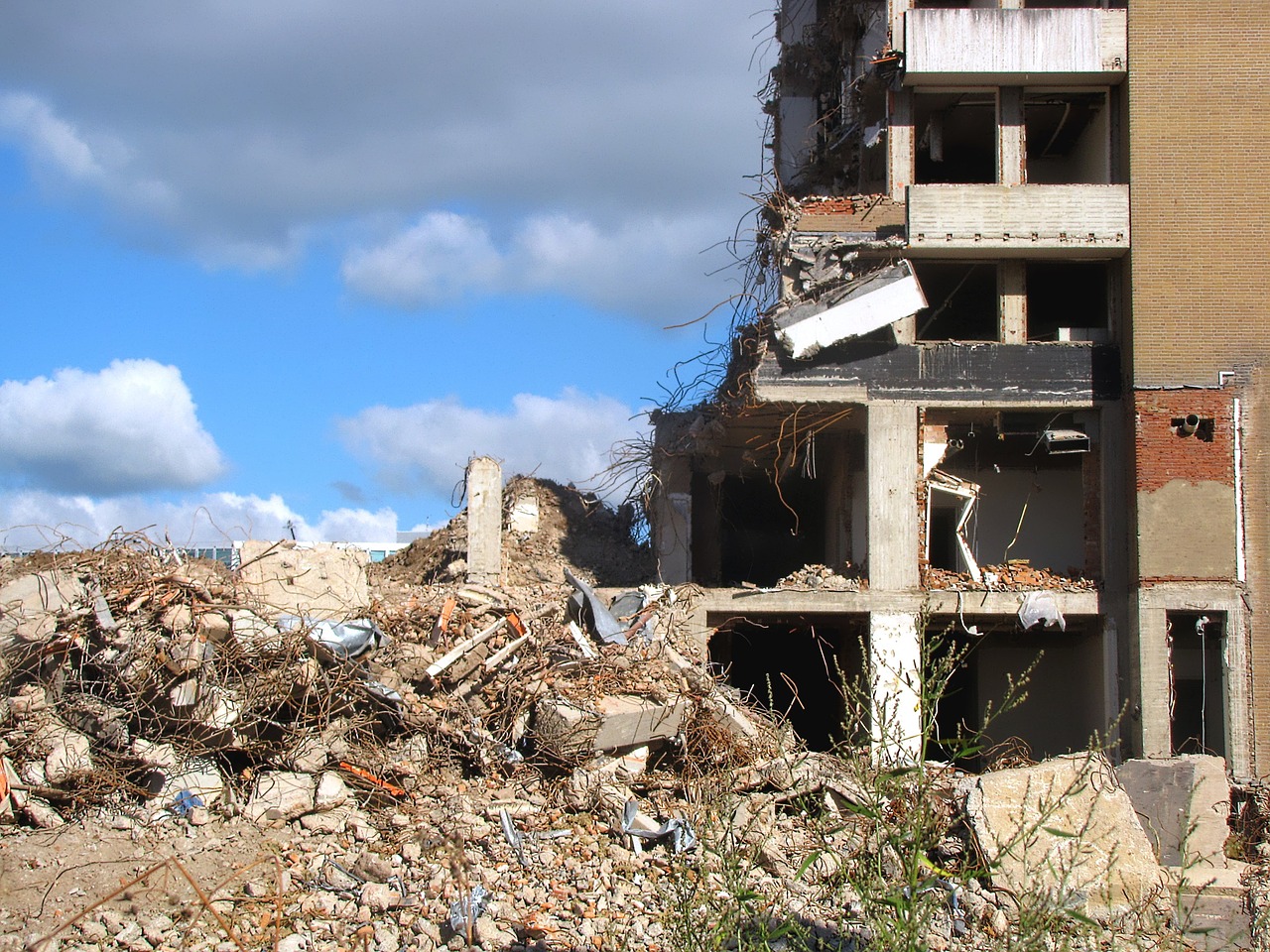Demolition safety
Contents |
[edit] Introduction
Health and safety is extremely important at all times. It is vital for construction industry professionals to review methods for maintaining safety in demolition.
[edit] Training
Construction workers should receive quality health and safety training. This is true for most industries, but it’s an important factor in many environments and should be vital for any individual using heavy machinery, equipment or leading a team.
When it comes to demolition, training is key. Anyone handling explosive and dangerous materials should know exactly what they are doing and be able to assess outcomes and potential hazards before the demolition. Having adequate training in this area will help to prevent serious accidents, which could be fatal - in particular if they are dealing with explosives.
The types of training individuals can receive for these types of jobs and environments are usually covered when receiving qualifications such as: IOSH, CITB, Working at Height, Risk Assessing and many others.
[edit] Wearing PPE is not an option
Most workers would not walk into a room full of dust and sand without the right equipment. Five-part PPE is standard for these types of situations and environments, which includes: Hard hat, high visibility vest, gloves, safety goggles and steel toe cap boots. In some cases, these items should be worn all time.
[edit] Ensuring the site is clean throughout
Keeping sites clean and safe throughout the entire process should be at the forefront of everyone’s mind - workers and site managers included. Having a clean site is standard amongst most health and safety regulations and should be implemented especially on demolition sites to ensure the safety of workers.
A safe site should ensure that every individual can access fresh drinking water and washing facilities as well as hot water and a clean and safe environment for cooking equipment. It's recommended to allocate storage space to prevent PPE from being over-worn or damaged.
[edit] Double checking during a final sweep
Before the actual demolition begins, it is a good idea to complete one final sweep throughout the entire building, in every room including any small storage areas, toilets, corridors and hallways. This will ensure that no one is left in the building and that every room is completely empty, even of furniture and other items.
During the demolition process, there should be an adequate number of workers securing the surrounding area. Their priority should be to make sure no one gets too close to the site once it starts being demolished, as this is a huge risk to health and safety.
This additional gate keeping of the site should include managing pedestrians and vehicles to ensure there is sufficient access for vehicles and walkways that do not interfere with the site. Keeping a one-way flow of traffic will prevent the need for any reversing of vehicles, which could cause problems if there isn’t a clear enough view for drivers to do so.
[edit] Post-demolition action items
After a building has been demolished, there is an incredible amount of debris; workers will need to cleanup and dispose of this debris properly. Wearing PPE during the cleanup stage is absolutely vital. With debris comes plenty of dust, sand and the potential for asbestos (although this should be removed before the site is demolished).
[edit] Related articles on Designing Buildings Wiki
- Asbestos.
- BREEAM Construction waste management.
- Construction dust.
- Deleterious materials.
- Demolition.
- Explosives.
- Filtering facepieces.
- Health and Safety.
- National Federation of Demolition Contractors NFDC.
- Personal protective equipment PPE.
- Recyclable construction materials.
- Site clearance.
- Site waste management plan.
Featured articles and news
The UK's Modern Industrial Strategy: A 10 year plan
Previous consultation criticism, current key elements and general support with some persisting reservations.
Building Safety Regulator reforms
New roles, new staff and a new fast track service pave the way for a single construction regulator.
Architectural Technologist CPDs and Communications
CIAT CPD… and how you can do it!
Cooling centres and cool spaces
Managing extreme heat in cities by directing the public to places for heat stress relief and water sources.
Winter gardens: A brief history and warm variations
Extending the season with glass in different forms and terms.
Restoring Great Yarmouth's Winter Gardens
Transforming one of the least sustainable constructions imaginable.
Construction Skills Mission Board launch sector drive
Newly formed government and industry collaboration set strategy for recruiting an additional 100,000 construction workers a year.
New Architects Code comes into effect in September 2025
ARB Architects Code of Conduct and Practice available with ongoing consultation regarding guidance.
Welsh Skills Body (Medr) launches ambitious plan
The new skills body brings together funding and regulation of tertiary education and research for the devolved nation.
Paul Gandy FCIOB announced as next CIOB President
Former Tilbury Douglas CEO takes helm.
UK Infrastructure: A 10 Year Strategy. In brief with reactions
With the National Infrastructure and Service Transformation Authority (NISTA).
Ebenezer Howard: inventor of the garden city. Book review.
The Grenfell Tower fire, eight years on
A time to pause and reflect as Dubai tower block fire reported just before anniversary.
Airtightness Topic Guide BSRIA TG 27/2025
Explaining the basics of airtightness, what it is, why it's important, when it's required and how it's carried out.
Construction contract awards hit lowest point of 2025
Plummeting for second consecutive month, intensifying concerns for housing and infrastructure goals.
Understanding Mental Health in the Built Environment 2025
Examining the state of mental health in construction, shedding light on levels of stress, anxiety and depression.























